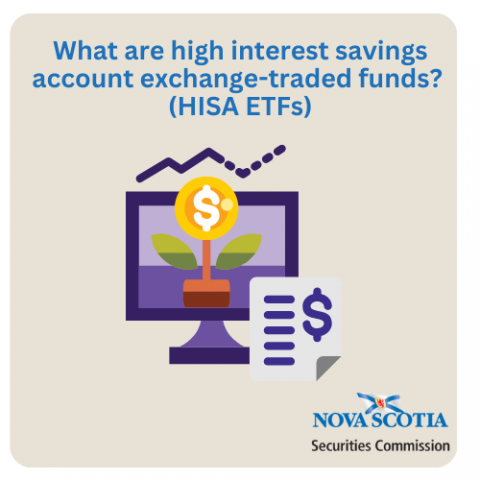Submitted by nsscadmin on

Rising interest rates in Canada over the last few years have caused an increase in investor interest in high-interest savings account exchange-traded funds (HISA ETFs). If you’re thinking about investing in HISA ETFs make sure you know how they’re structured and if they fit your investing goals. In this post we’ll explain how HISA ETFs work to help investors determine if they’re right for them.
A HISA ETFs is considered to be a low risk highly liquid investment. A HISA ETF invests capital in multiple high interest saving accounts at Canadian banks. When interest rates are high (like they are currently) a HISA ETFs can deliver strong returns. For example, one HISA ETFs that is offered by a Canadian investment fund firm is currently offering a near 5% yield.
Most HISA ETFs pay out monthly distribution to investors. The value of these monthly distributions can rise or fall dependant on interest rates. Like all ETFs a HISA ETFs has a management expense ratio, but it is often very small as the fund does not require much management. No matter how small the fees are make sure you understand what they are and how much they will cost you before investing.
HISA ETFs are often compared to GICs as they both pay interest which is connect to interest rates. There are a few key differences between GICs and HISA ETFs that may make one a better investment for you.
The first key difference is how each product reacts to changing interest rates. When you purchase a GIC the interest rate is locked in for the entire term. Whatever interest rate you agree on at purchase is what you will receive when the term expires. A HISA ETFs’ yield changes as the interest rates changes while you hold it.
The second key difference is hold requirements and liquidity for each product. For locked in GICs you must hold them until the term ends. For example., if you purchase a locked-in GIC with a three-year term you must hold it for three years before you can sell it to collect your return. A HISA ETF trades on an exchange and can be bought or sold whenever the market is open at the current trading price.
A third difference is that contributions to a HISA ETF are not covered by the Canadian Deposit Insurance Corporation (CDIC) while GICs are covered.
If you are interested in investing in HSIA ETFs, be aware that HSIA ETFs are not offered by all brokerages. For example, so brokerage run by Canadian banks do not offer HSIA ETFs that investing in high-interest savings account from that bank.
The Nova Scotia Securities Commission does not provide investment advice. We are not advising investors to invest in HISA ETFs. We are providing information on HISA ETFs for educational purposes to help investors make more informed investment decision. Always assess your financial goals, risk tolerance, and time horizon before making any investment, including an investment in a HISA ETF.
